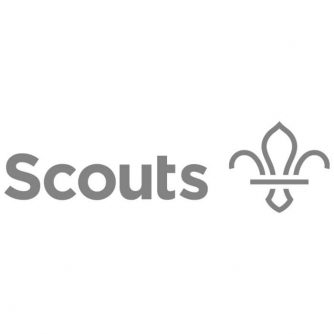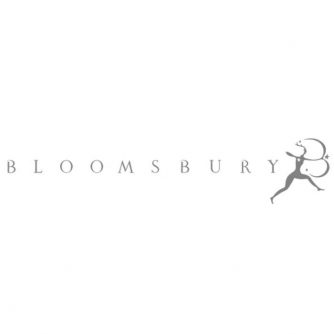If there was one drawing exercise to improve your portrait drawings, this one would be high up on the list.
But, instead, this is what a lot of beginners do to their disadvantage.
They go straight into drawing the outlines. They start with drawing the entire head, the nose, the mouth, trying to place each feature one by one. This is without understanding the big shapes, foundations and structures underneath.
Everything starts to float and actually, for many beginners, they are surprised when it all falls apart. The proportions are way out. There’s no accuracy and there’s just so much detail straight away.
However, if you’re reading this and thinking “this is what I do with my drawings”, fear not! In this article I’ll share one powerful 1 drawing exercise to improve your portrait drawings.
You can do this when you’re at home, when you’re drawing from a life model or drawing from a photograph. These drawing exercises will help you develop your drawing skills and have another skill to your bow.
If you’ll prefer to watch instead of read, take a look at this video to help you. If you found it helpful, smash that Like button, subscribe The Portrait Guru, and comment me!
Simple Drawing Exercise: How To Improve Your Portraits
So instead of chasing lines, I’ll show you what you should do instead.
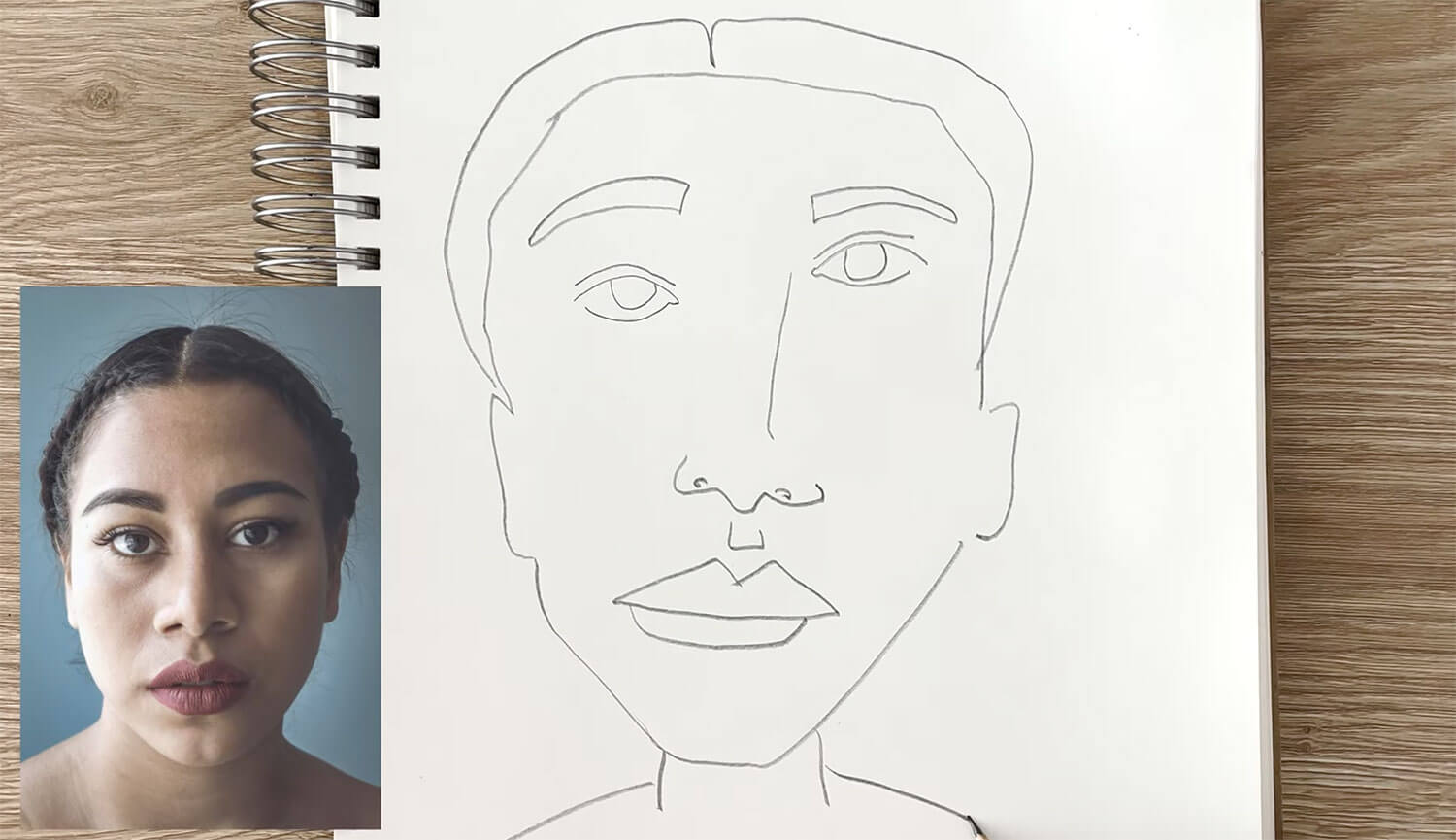
This time I’ll focus only on tones and shape design. This can actually help improve your drawing skill, your proportions, and anything that you’re drawing.
It’s a really valuable drawing exercise. I’m using a photo, but this time, instead of drawing outlines or features, I’m only drawing the shapes I see. Grab a reference photo or use mine, which I do suggest.
Squint your eyes and look for the shapes, not the features. You’re not drawing the eyes or a mouth. You’re drawing abstract masses of light and shadow.
I use Adobe Photoshop to boost contrast, turn it into a black and white photo, and I apply the medium filter to help me isolate the tone.
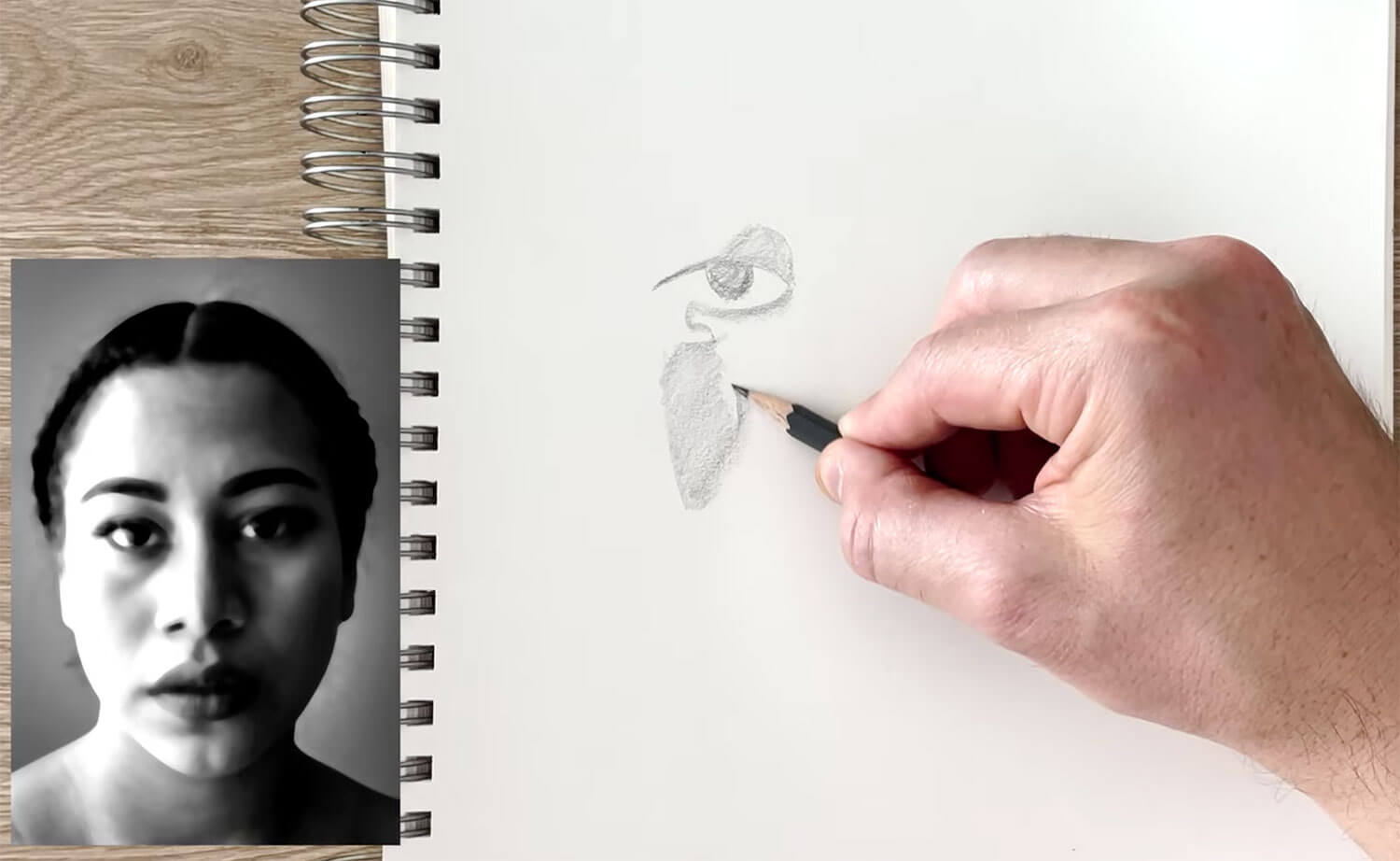
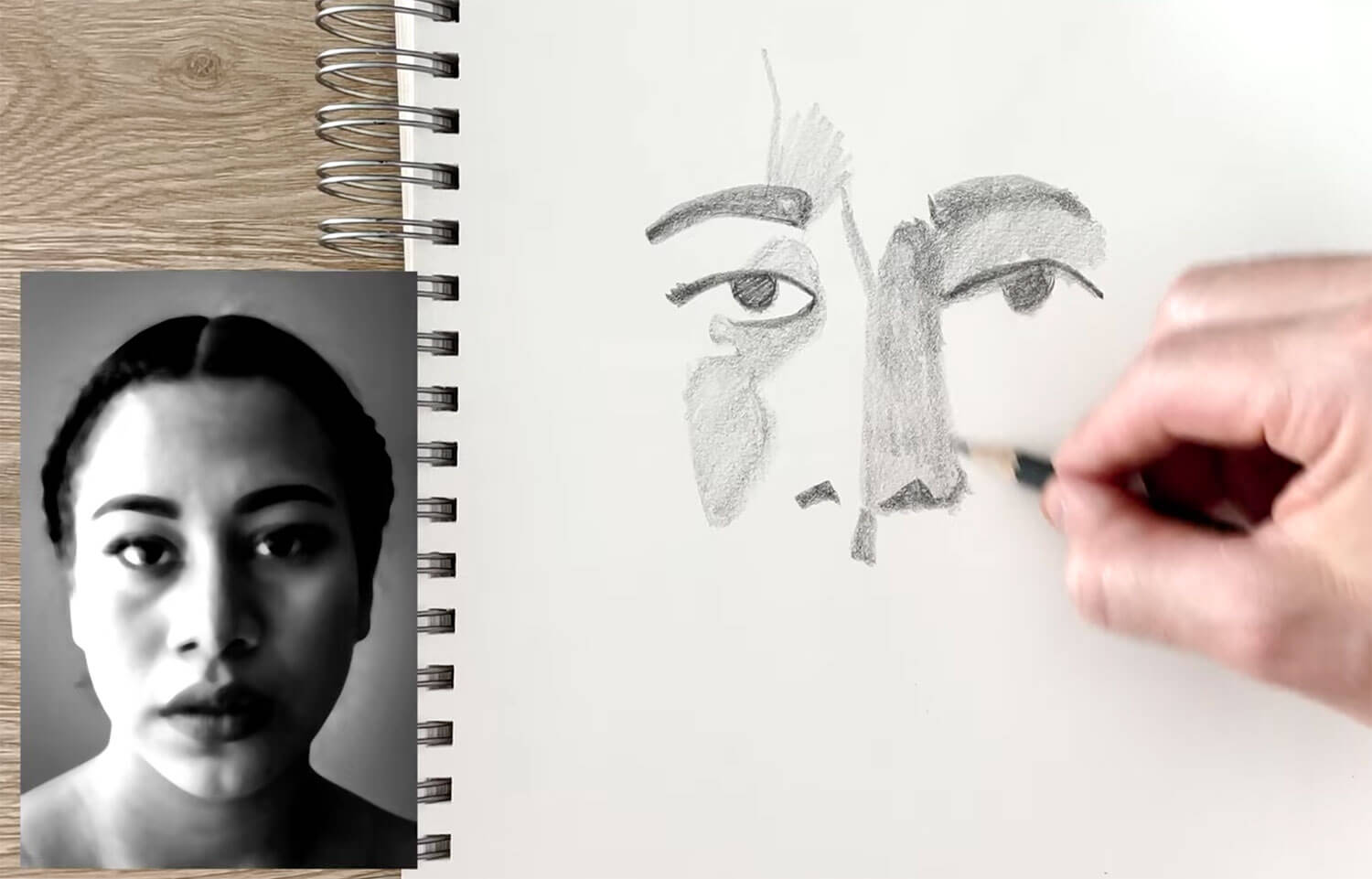
This is a great way to train your eyes early on. I like to limit to just three or four tones maximum. Adding more can break the structure and it forces me to simplify and focus the overall shape of the drawing.
That is the essence of good drawings. It’s the shapes that you’re creating. You don’t need to get bogged down in the details form the get-go, a classic beginner drawing mistake!
Don’t fall victim to it, I’ve been there many a time in my artistic journey.
That’s what gives the drawing strength and clarity. Drawing tones like this is a really helpful for proportions and accuracy, and it’s a really good exercise.
My drawing isn’t 100% accurate, but it’s a strong depiction of the face because I focused on the shapes. This is what you should aim for, too. Focus on the negative shapes, the space around the head, the silhouette of the shadows, to the lights and darks.
This is what trains your eye and helps your overall drawing skill. Take your time with the darks, and don’t rush into making everything black straight away.
Things to Keep in Mind
Focus on a dark value, a light value, and one in between (the mid tone). Try and stick to maximum of three or four tones.
When you’re drawing in real life, squint your eyes to see those big shapes. It helps you isolate values, and also helps you see edges.
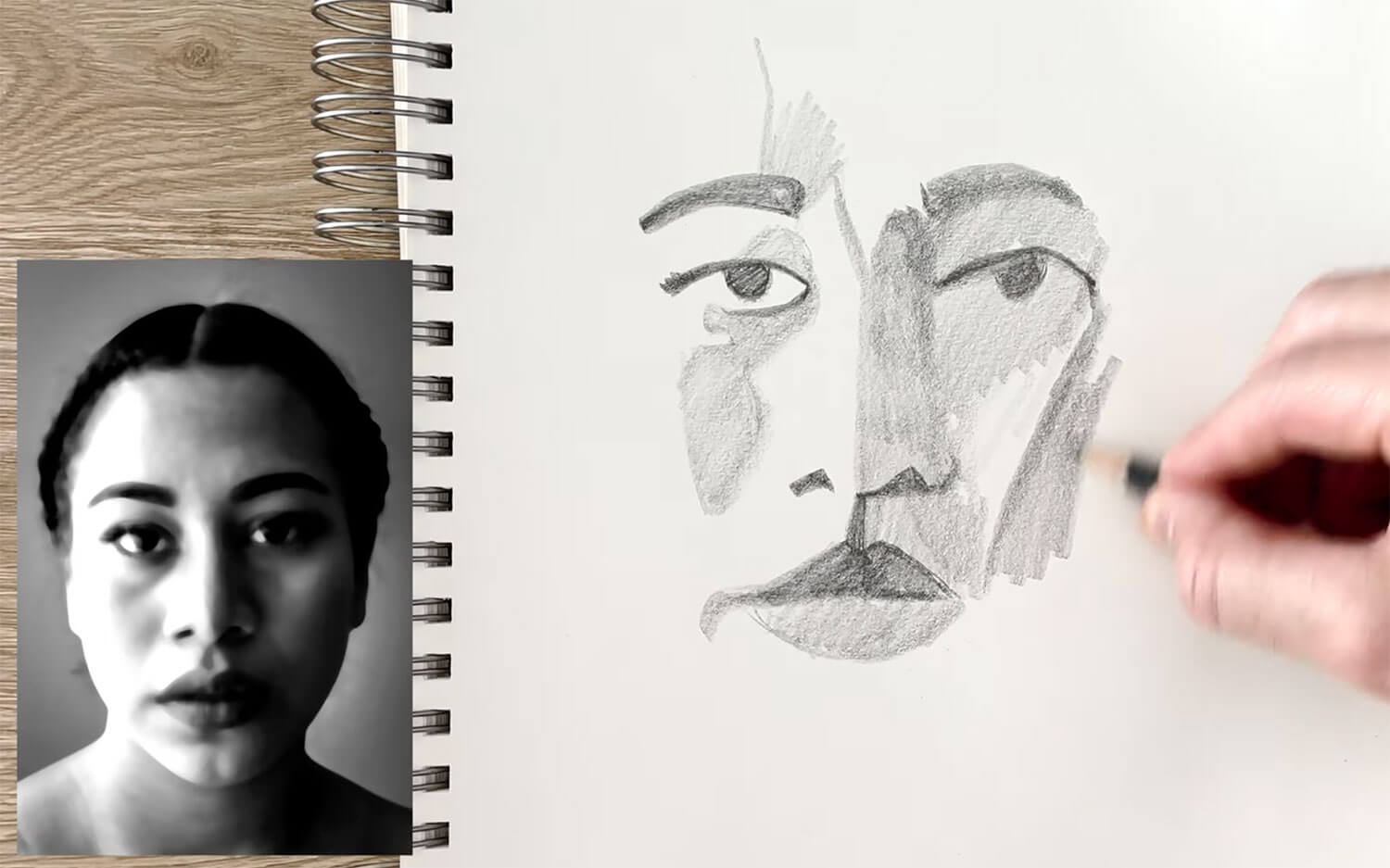

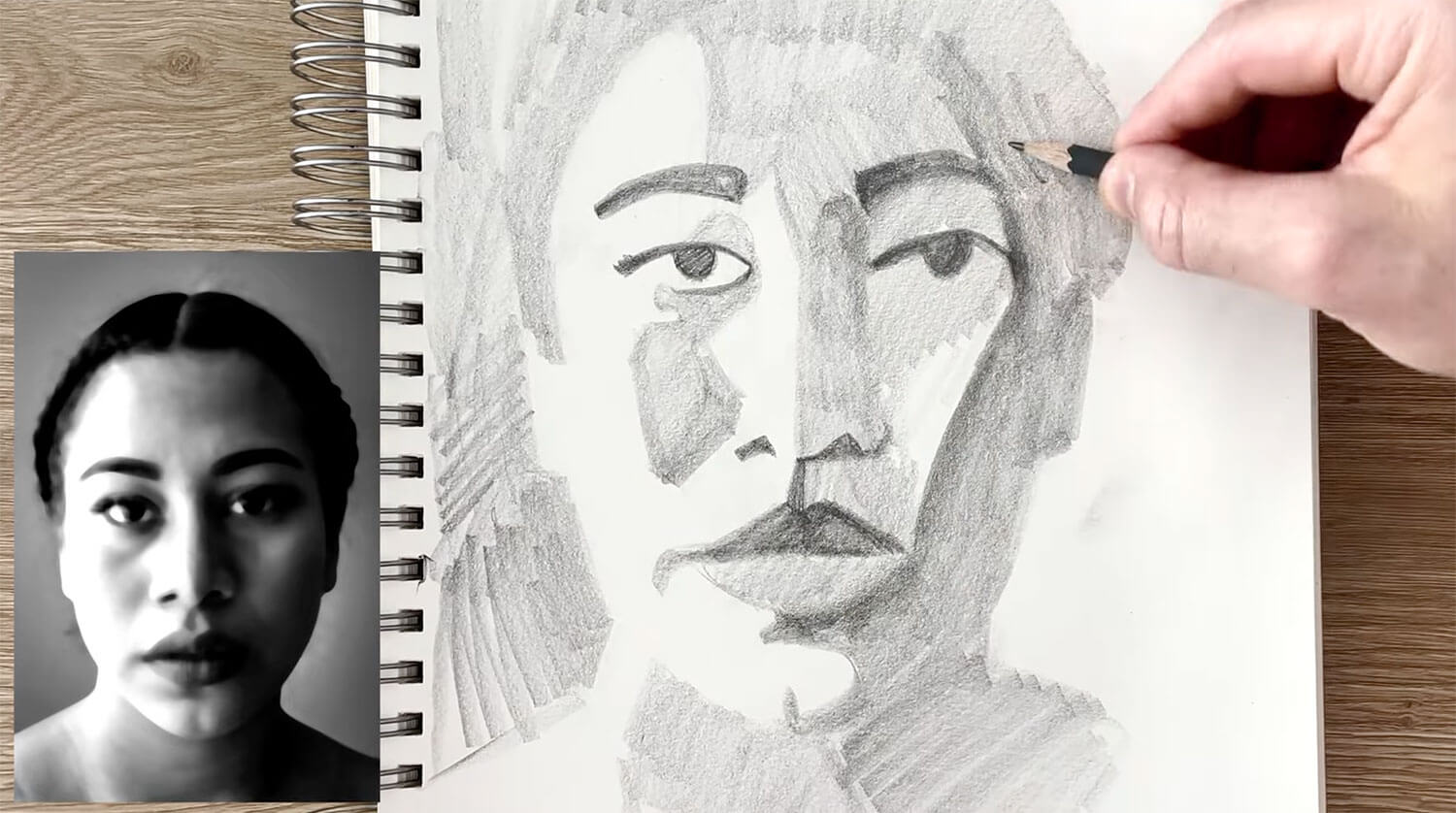
You might think that things look blurry, but it actually helps you see the shapes in front of you. Don’t be afraid to exaggerate some of the shapes slightly as it helps the composition.
This is training your eye as well as your observation.
So, there you go, a drawing exercise which focuses only on the tones and the shape. You can see it’s a really good representation of the face without going into any of the details. This shift to drawing the shapes and tones, instead of lines, has changed the way I draw portraits. It’s also helped anything I draw in general, and it will help you too!
It’s improved my accuracy, my design sense, and just made the whole process way more enjoyable. You don’t actually have to get bogged down in those details.
Conclusion
Mastering portrait drawing is not as difficult as it lets on.
It isn’t about rushing into lines and details, that a lot of beginners fall into. It’s about seeing and capturing the big shapes, tones and structure first.
By practising this simple exercise, you’ll improve your proportions, observation skills, and overall confidence in your drawings. It’s definitely a drawing exercise that goes under the radar!
Take your time with it too by focusing on the big shapes, and let the details come naturally later.
Your portraits will feel stronger, more accurate, and more enjoyable to create.
Check out these other resources to keep improving your drawing skill:
- Portrait Drawing for Beginners – Step by Step Tutorial
- Sketchbook Drawings and Art Update – See my sketchbook in action!
- How To Improve Your Drawings – 10 Daily Drawing Exercises
- The Brush Pens That Improved My Drawings x10 – Honest STAEDTLER Brush Pens Review
- How To Draw Your Self-Portrait – Easy Drawing Step by Step Tutorial
Many thanks for listening and visiting my blog today. You can follow what I’m up to on my Twitter, Facebook, or Instagram pages, I’ll really appreciate it if you do, and don’t be afraid to say hi to me! Many thanks again, and have a great day!
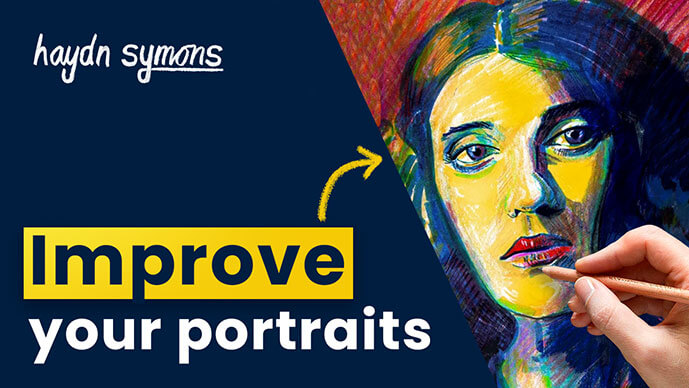
 17th November 2025
17th November 2025

